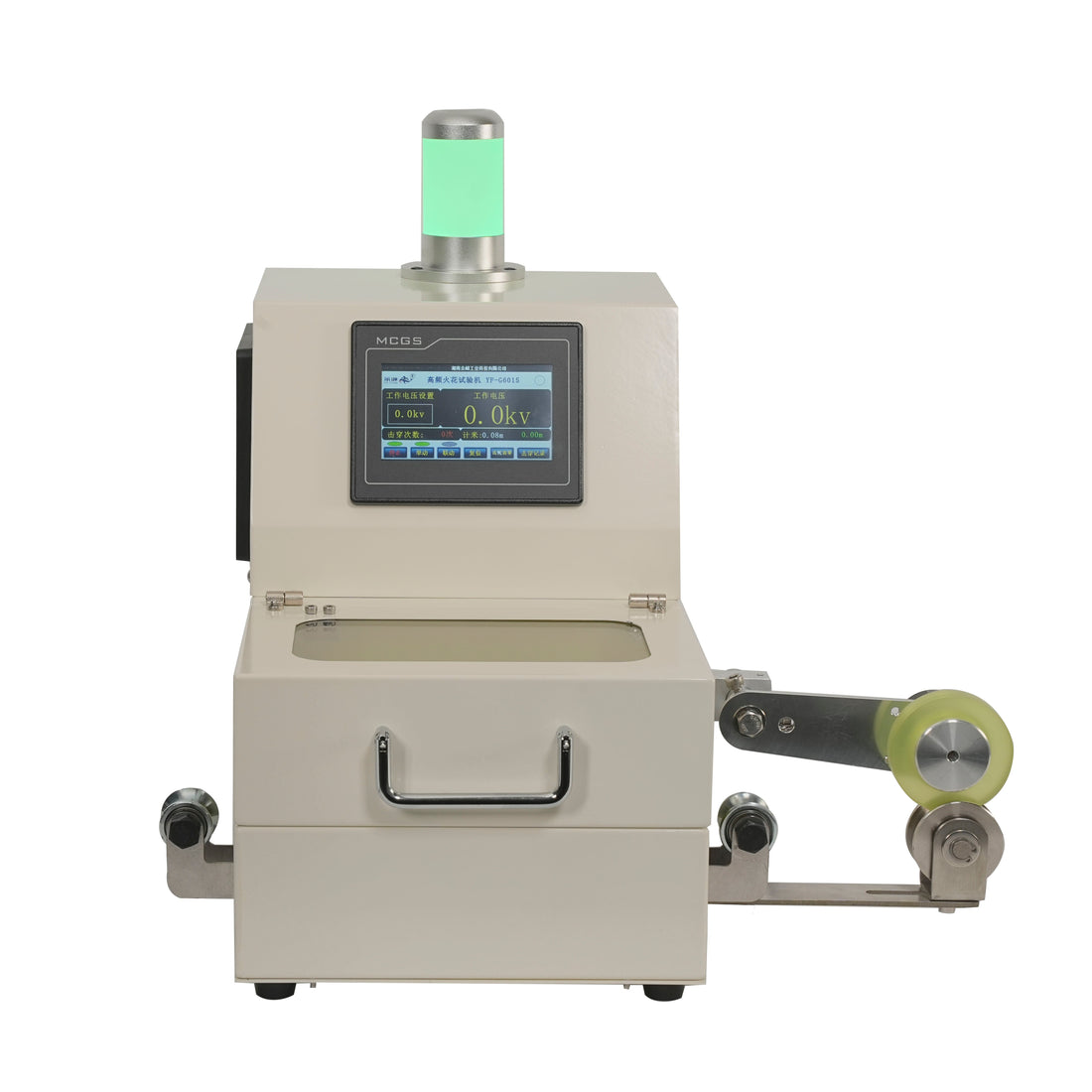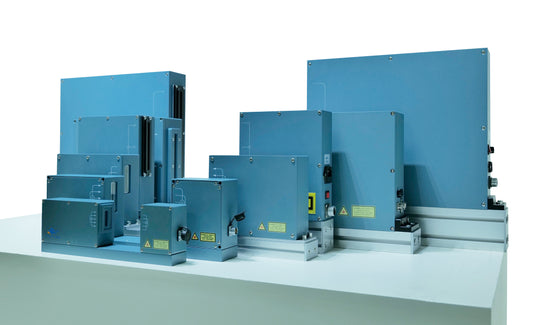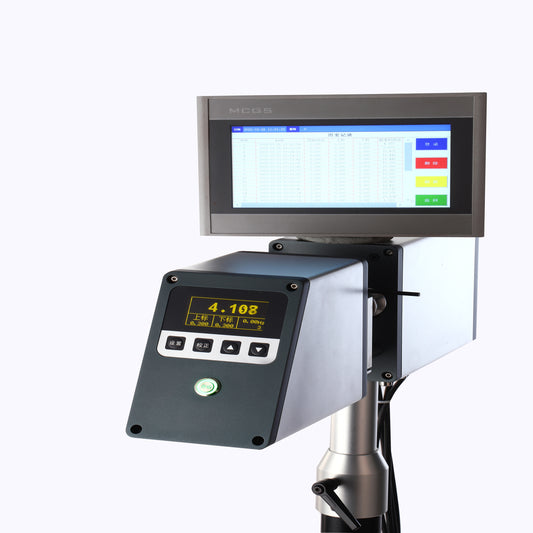
7 Core Application Scenarios of Spark Testers: Comprehensive Inspection Solutions from Production Lines to Laboratories
Share
In industries such as wire and cable, enameled wire, and new energy wiring harnesses, the integrity of insulation layers directly impacts product safety and service life. The Spark Tester, a critical device for detecting insulation defects (e.g., pinholes, scratches, impurities, etc.), has far broader applications than traditionally recognized. This article delves into the 7 core industrial application scenarios of spark testers to help you fully understand their value.
1. 100% Online Inspection on Wire and Cable Production Lines
Features:
High-speed detection: Compatible with production lines exceeding 3,000 m/min, enabling real-time insulation quality monitoring.
Automatic sorting: Alarms and marks defect locations upon detection, integrating with PLC systems to reject defective products.
Wide diameter range: Covers everything from ultra-fine enameled wires (0.02mm) to high-voltage cables (50mm²).
Industry Case:
An automotive wiring harness manufacturer reduced insulation defect rates from 0.5% to 0.02% using spark testers, saving over 2 million RMB annually in rework costs.
2. New Energy Industry: Power Battery Pack Wiring Harness Inspection
Challenges:
High-voltage wiring harnesses (e.g., 600V+ EV battery systems) demand extremely high insulation standards—even micro pinholes can cause short circuits.
Flexible cables are prone to hidden defects when bent.
Solutions:
Multi-frequency detection: Combines DC high voltage (0-15kV) and pulsed testing to ensure no missed defects in bent sections.
Data traceability: Generates batch inspection reports to comply with IATF 16949 quality management requirements.
3. Enameled Wire Production: Capturing Micron-Level Defects
Technical Difficulties:
Enameled wire insulation layers are extremely thin (µm-level), making hidden damage undetectable via visual inspection.
Spark Tester Optimization:
Low-voltage, high-sensitivity mode (0.5-3kV): Prevents damage to qualified products.
Eddy current-assisted detection: Enhances detection of "semi-conductive impurities" using electromagnetic induction.
4. Aging Cable Maintenance: Preventive Inspection
Value:
Provides partial discharge warnings during power inspections of underground and overhead cables.
Identifies insulation aging zones (e.g., intermittent discharge caused by surface cracks).
Equipment Requirements:
Portable design (e.g., handheld spark testers).
Strong anti-interference capability (suitable for complex environments like substations).
5. Special Cable Testing (High-Temperature/Shielded/Composite Insulation)
Special Needs:
Silicone rubber cables: Require lower test frequencies (<3kHz) to avoid false alarms.
Metal-braided cables: Use "dual-electrode mode"—grounding the outer layer before testing inner insulation.
Teflon wires: Require higher test voltages (up to 20kV) due to the material’s high dielectric strength.
6. Laboratory R&D: Material Performance Verification
Research Applications:
Comparing breakdown voltage thresholds of different insulation materials (PVC/XLPE/TPU).
Simulating insulation failure patterns under harsh conditions (high temperature/humidity).
Data Utilization:
Provides insights for optimizing insulation processes in new product development, reducing R&D cycles by over 30%.
7. Medical Wiring: High-Reliability Applications
Industry Standards:
Complies with ISO 13485 (Medical Device Quality Management Systems).
Tests biocompatible cables for ECG machines, endoscopes, etc.
Technical Highlights:
Ozone-free design (prevents high-voltage discharge from contaminating cleanrooms).
Microscopic defect imaging (retains evidence for FDA audits).
How to Choose the Right Spark Tester?
Focus on:
Voltage range (e.g., 5kV for standard cables, 15kV+ for high-voltage wiring).
Detection speed (must match production line speed).
Data functions (e.g., historical record tracking).
Yufeng High-Frequency Spark Testers (compliant with GB3048.15-92 (China) & UL1581-1990 (USA) standards) help you achieve:
1.High-efficiency processing: Uses high-frequency pulse discharge for precise pinhole and scratch detection, boosting productivity.
2.Breakdown metering & marking: Measures breakdown positions and marks defect locations.
3.User-friendly operation: Intuitive interface, minimal training required.
4.Durability & stability: High-quality materials and precision manufacturing ensure reliability.
5.Wide applicability: Suitable for conductive materials, wires/cables, automotive electronics, audio/communication cables, etc.
|
Model |
Voltage Range |
Voltage Accuracy |
Repeatability |
Operation Mode |
Display |
Power |
Control |
Communication |
Options |
|
YF-G6015 |
1–15 kV |
±0.1 kV |
±0.1 kV |
Continuous pulse |
7" touchscreen |
100W |
Standard |
RS485/ModBus |
Breakdown metering & marking |
|
YF-G6025 |
1–25 kV |
±0.1 kV |
±0.1 kV |
Continuous pulse |
7" touchscreen |
180W |
Standard |
RS485/ModBus |
Breakdown metering & marking |
Conclusion
Spark testers have evolved from simple "defect detection tools" into core quality checkpoints in smart manufacturing. Whether for improving efficiency, meeting industry certifications, or preventing risks, selecting the right equipment for your application is crucial.
Which scenario applies to you? Share your thoughts below!


